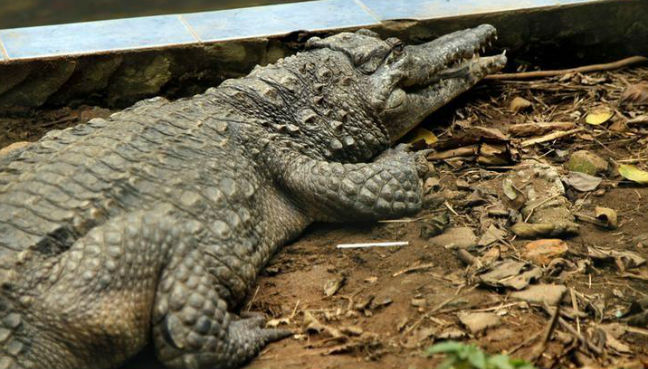This technique scans a tooth and measures the complexity of its surfaces.
这项技术扫描牙齿并测量其表面的复杂性。
Use of OPCR has demonstrated, in a quantifiable manner, that diet is closely related to tooth complexity.
OPCR的使用以可量化的方式证明,饮食与牙齿复杂性密切相关。
Carnivores tend to have simple teeth. Omnivores have more complex teeth. Herbivores have the most complex teeth of all.
食肉动物的牙齿比较简单。杂食动物的牙齿更复杂。食草动物的牙齿是所有牙齿中最复杂的。
Until now, however, the technique has been used mostly on the molars of living mammals.
但直到现在,这项技术主要用于现存哺乳动物的臼齿。
Indeed, Mr Melstrom and Dr Irmis knew of no studies that had tested it extensively on crocodiles and their kin.
事实上,Melstrom和Irmis博士都不知道有任何研究对鳄鱼及其近亲进行的广泛测试。
This lack of testing made sense, because living crocodilians have no complex tooth morphologies to analyse—so why bother?
缺乏这种测试是有道理的,因为现存的鳄鱼没有复杂的牙齿形态来分析,所以为什么要麻烦呢?
However, the strange teeth of ancient crocodiles, they reasoned, might give OPCR something to work with.
但他们推断,远古鳄鱼奇怪的牙齿可能会给OPCR提供一些启发。
In total, they threw146 teeth from16 extinct crocodilians at OPCR.
他们一共对16只灭绝鳄鱼的146颗牙齿进行OPCR分析。

For comparison, they also added teeth from a modern caiman into the mix.
为了进行对比,他们还加入了现代凯门鳄的牙齿。
The analysis revealed that two of the extinct species were, like the caiman, carnivorous.
分析显示,其中两个灭绝的物种,和凯门鳄一样,是食肉动物。
But even these were notably different from modern animals in that one had serrated steak-knife-like teeth
但即使是这些动物也与现代动物有明显的不同,一种动物有锯齿状的牛排刀状牙齿,
and the other had triangular teeth that made contact with one another when the animal closed its mouth
另一种动物有三角形的牙齿,当动物的嘴闭上时,这些牙齿就会互相接触
(something not seen in modern crocodilians). The system identified two of the species as "durophagus",
(这是现代鳄鱼所没有的)。系统鉴定出其中两种为“具有硬壳或外骨骼的生物体”,
meaning that their teeth looked as if they would be good at crushing the shells of clams, crabs and other armoured invertebrates.
这意味着它们的牙齿似乎很擅长咬碎蛤蜊、螃蟹和其他甲壳类无脊椎动物的外壳。
One species was identified as omnivorous. And eight, including Simosuchus, were identified by OPCR as obligate herbivores.
一种被鉴定为杂食动物。八种,包括迷你鳄鱼,被OPCR鉴定为专性食草动物。
(The other three were hard to classify, but may have been insectivores.)
(其他三只很难分类,但可能是食虫动物。)
What particularly surprised Mr Melstrom and Dr Irmis, though, was the way herbivory mapped onto the crocodile family tree.
让Melstrom和Irmis博士感到特别惊讶的是这种食草性映射在鳄鱼族谱上的方式。
Rather than evolving once at some point long ago and then appearing in all later species on that branch,
这种食草性不是在很久以前的某个时候进化过一次,然后出现在那个分支上的所有后来的物种中,
it came into existence at least three times during the history of these reptiles.
而是在这些爬行动物的历史中至少出现过三次。
Herbivorous crocodiles of the Jurassic and Cretaceous, then,
侏罗纪和白垩纪时代的食草鳄鱼
were capable of competing successfully with their dinosaur counterparts in a way that
能够成功地与它们的恐龙同伴竞争
a modern herbivorous crocodile presumably could not with the plethora of herbivorous mammals that now exists.
但现代食草鳄鱼可能无法用这种方式和现存的过多的食草哺乳动物成功竞争。
译文由可可原创,仅供学习交流使用,未经许可请勿转载。












